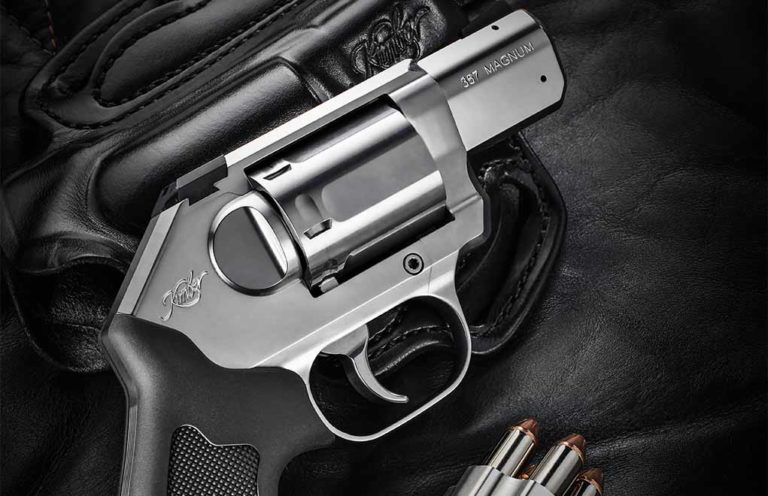
The .357 Magnum revolver soldiers on, a fine choice for concealed carry … if you hunt out the right piece.
What Are The Best .357 Revolver Options For Concealed Carry:
A .357 Magnum revolver for concealed carry … really? Might as well hook up a mule team to your buggy for the daily commute. In certain quarters of the gun world that’s what an on-person gun chambered for granddaddy magnum amounts to—an anachronism of the highest degree. Yet, in a world awash with polymer, striker-fired pistols the tried-and-true .357 revolver soldiers on. What gives?

Truth be known, the revolver-cartridge combination is a proven, reliable, popular and powerful system—still considered by many among the most trustworthy for self-defense. For the better part of the 20th Century, perhaps only the .38 Special overshadow it’s use by law enforcement. And in this role, few other sidearms built a better reputation for neutralizing deadly threats.
Truth be told, with ammo and gunsmithing advancement, the .357 Magnum has only gotten better with time. This includes the delicate role of concealed carry gun. Today, there is a slew of .357 Magnum revolvers worth considering if the wheelie and cartridge fit your particular lifestyle. We’ve chosen five we believe excel in this role. But so we don’t put the cart before the horse (or mule), let’s hash out if the gun and cartridge fit your particular circumstances.
Should You Go A .357 Magnum Revolver?
We have a much longer write-up on the pros and cons of .357 Magnum as a personal-defense option, well worth checking out if you’re seriously considering this route. But for our discussion here we can boil down the gun and cartridge’s pluses and minuses to the quick.
Pros
Proven Self-Defense Cartridge—The cartridge is still considered a superior option for neutralizing a threat and has the resume to back it up. Additionally, the cartridge boasts among the widest selection of ammo that passes the FBI’s barrier and penetration tests.
Simple Manual of Arms In Its Guns—To troubleshoot a double-action revolver you simply pull the trigger again. Doesn’t get much easier. True enough, revolvers aren’t immune to malfunctions and when they jam they jam like no other. However, the occurrence is rare enough to be negligible.
Manageable For Most—Unlike almost any other handgun magnum, everyday shooters can master the .357. There is a “but” to this that we’ll go into greater detail on in a moment.

Cons
Difficult Double-Action Trigger—It’s long and heavy and requires much more practice than a snappy single-action or striker-fired pistol to achieve consistent accuracy. If there’s any one facet that makes the revolver—.357 Magnum or otherwise—a marginal option for beginners it’s this.
Shorter Barrels Notably Reduce Velocity—Snubbed-nose .357 Magnum revolvers produced excessive muzzle flash for a reason, they burn a lot of powder outside the bore. In turn, this style of revolver won’t top-end most loads' velocity by any stretch. By no means is the popular myth true a short barrel degrades the magnum to +P .38 Special performance. But realize, out of a snubbie ammo won’t live up to the box-side ballistics.
Limited Capacity—Expect 5 or 6 rounds at best. That’s cutting things close. Additionally, reloads are no walk in the park, involving many more steps than a semi-auto pistol, taxing fine motor skills under stress. Go a .357 Magnum revolver, you’d better practice your emergency reloads!
There’s an elephant still in the room, the “but” we mentioned above, and it's particular to many concealed carry .357 Magnum revolvers. Some are out-and-out bears to shoot. There’s a reason why the guns have the dubious moniker “knuckle busters”.
This is not a good situation. Excessive recoil does not breed excellent marksmanship, thus the reason why professional dalliances with the 10mm and .41 Magnum have been short-lived. Folks don’t like to train when their hands are getting the Torquemada treatment, and it has the potential to lead to problematic issues such as flinch.
Very light and small .357 Magnum revolvers tend to this sort of experience. Though, there is a way to mitigate some of this, which segues nicely into our selection criteria.
Other Great Reads on the .357 Magnum
- .357 Magnum: The Pros And Cons For Self-Defense
- Pistol-Caliber Rifles: Does The .357 Magnum Reign Supreme?
- Self-Defense: .357 SIG And .357 Magnum Ammo Considerations
- Going The Extra Inch: 3-Inch Barrel Ruger LCRx .357 Magnum
- Full-Sized Hot Rod: The Kimber 4-inch K6s Target
- Ideal .357 Revolver Short Nose Revolvers for Close-Quarters Defense
.357 Magnum Revolver Stipulations
In making our selections of best concealed-carry .357 Magnum revolvers, we stuck to our usual criteria for separating the wheat from the chaff:
Reliability: The guns are well made with a reliable track record.
Concealability: We’re looking at concealed carry revolvers, in turn, we’re sticking with smaller .357 Magnums.
Accessibility: All the models are currently in production, thus found at most gun retailers.
However, we also added another evaluation point—shootablity. Given this, many of our choices tend toward the heavier end of the spectrum. It makes a difference.
Take a hypothetical a 140-grain .357 Magnum load that leaves a snubbie's muzzle at 1,000 fps. Shoot it from a 22-ounce Smith & Wesson Pro Series Model 640 and it generates roughly 10 ft-lbs. of recoil energy. Put that same load in an 11-ounce Smith & Wesson Model 340PD and the recoil energy nearly doubles to 19 ft-lbs. For context, that’s the neighborhood of many .270 Winchester loads out of a 7-pound rifle.
Considering this, a bit of extra weight on the hip is a worthwhile tradeoff for what will likely lead to more consistent accuracy.
Best .357 Revolvers For Concealed Carry
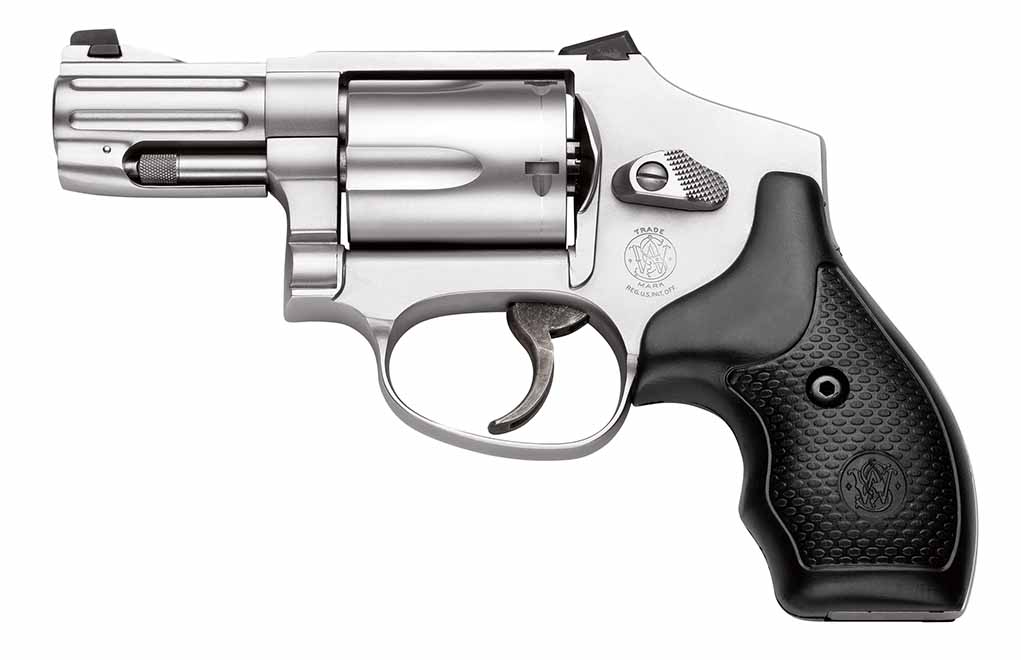
A staple in Smith & Wesson’s J-Frame catalog, the snubbie .357 Magnum revolver is a gem of its class. Constructed of all stainless steel, the rugged double-action only (DAO) likely has the chops to be handed down to a son or daughter one day. And, like most Js, is a fairly easy affair to conceal. How about to shoot? It's about as pleasurable as this sized magnum gets. It certainly doesn’t get the nod for weekend plinker, but at a hefty 22 ounces the 640 sets shooters up for success.
Smith & Wesson offers the plain Jane version of the concealed-hammer 640 and a Performance Center Pro Series option. With about $100 difference between the two models, the PC upgrade is worth the money delivering not only a more attractive gun but some notable enhancements. The three that pop out on the 5-round revolver are rear and front tritium drift-adjustable sights, a cylinder cut to accept moon clips and a PC-tuned trigger. Yeah, it’s still as heavy as a kettlebell, but boy is it smooth. MSRP: Model 640 $809; Pro Series $939 smith-wesson.com
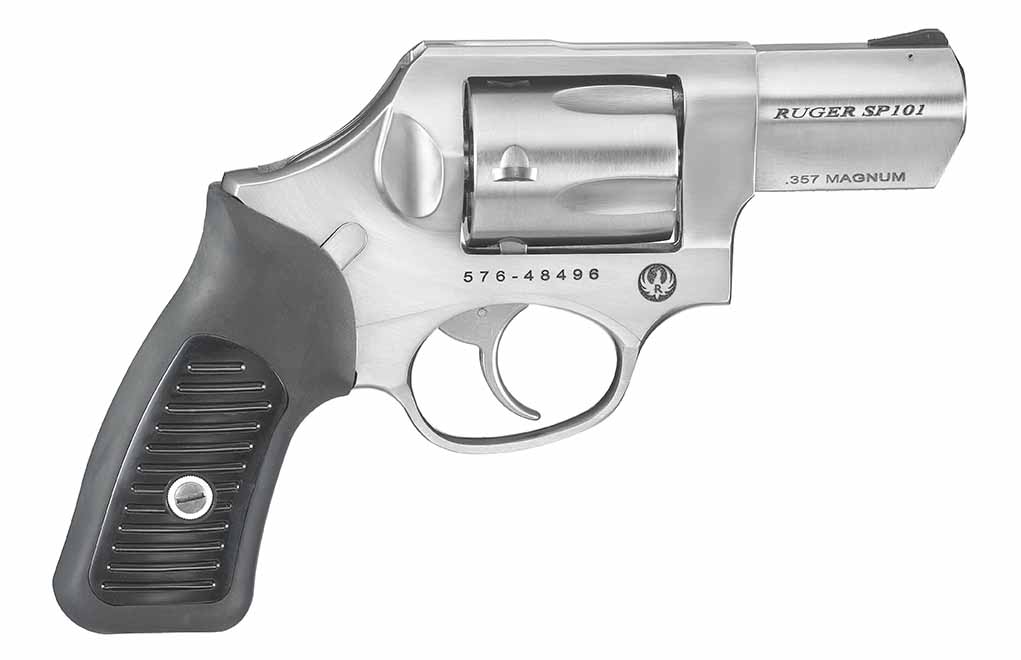
There’s a lot of gun here, and we’re not talking metaphorically. Even in its 2.25-inch snub-nose rendition, the SP101 is constructed from a load of stainless and it looks it—almost reminiscent of Smith & Wesson’s K-frame Model 66. As we discussed previously, as a primary arm this is an advantage giving shooters a more manageable system. Although, it might be a better option for an outside the waistband (OWB) holster. For the right individual it could qualify for inside the waistband (IWB). Pocket carry is pushing it.
The 5-round .357 Magnum revolver shoots well, and for its bulk cuts a fine figure, especially with its full lug. Its factory grips are a bit small, but easily upgradable with plenty of aftermarket options. The DAO model is the most logical concealed carry candidate, the spurless hammer enhancing an already streamlined design (an advantage of casting).
Yet, be forewarned—the SP101 has a notoriously heavy and somewhat gritty trigger pull. Plus, it’s only available with an integral rear sight in DAO—not the most precise of systems. Then again, you aren’t getting a concealed carry magnum for precision range work. MSRP: Starts at $919, ruger.com
If weight is the utmost concern, the .357 Magnum LCR is most likely the best option. At 17 ounces, it walks a fine line and, for the most part, is at the basement in what we’d consider a manageable concealed carry magnum. Buyer beware, this is a much buckier .357 Magnum revolver, but not at the magnitude of ultralight guns. Size-wise, with a 1.87-inch barrel, the LCR not only qualifies as a primary carry arm, but would fill the role as a hard-hitting backup.
Outside of its dimensions, the .357 revolver has several other nice attributes, from very comfortable Hogue Tamer grips to replaceable pinned front sight—in case you want to upgrade to a low-light option. Above anything, it has an excellent trigger. Yes, it’s a heavy pull (what did you expect in double-action?), but it’s like silk compared to most factory switches. The LCR is also intuitively laid out, with a button cylinder release on the left side that picks up the pace of the DOA’s reloads. MSRP: $859, ruger.com
Kimber put thought into what makes a solid concealed carry revolver and it shows in its K6S line. Easy to keep under wraps, but not at the expense of controllability, the nifty snub-nose heaters present armed citizens with the whole package. To boot, they're lookers—too bad the guns are meant to avoid the light of day most of their lives.
Kimber bills its 2-inch barreled K6S as the lightest 6-round .357 Magnum revolver on the market, but don’t let that spook you. The gun is still substantial at 23-ounces and eats a majority of recoil. Also, don’t let the extra round in a concealed-carry model fool you either—it’s still very easy to fit inside the waistband or pocket. In part, this is thanks to milled flats on the stainless-steel gun’s cylinder that keeps it nearly as svelte as 5-round options.
The K6S design is sleek, reducing the chances of hanging up on the draw, hastened further by a concealed hammer. The gun also sports a top-notch trigger, with a light-for-DAO 9-pound break. With practice it runs fast. One more thing, actual front and rear sights earn the K6S extra points. As far as model, the Stainless is the most affordable, but the DCR adds a touch of class with rosewood grips. Other variants are available as well. MSRP: Starts at $985 kimberamerica.com
The reboot of the Colt Python has somewhat overshadowed the King Cobra in the public’s eye. Nevertheless, it does little to diminish the snub-nose .357 Magnum revolver’s performance in its main role—on person self-defense piece. Plus, it’s a Colt “Snake Gun”, with is inherently cool.
All stainless steel and nearly a full-sized grip, the King is a fairly polite piece, one that with some practice runs fast and accurate. Part of this is thanks to the 6-round revolver’s weight, which is an ample 26-ounces unloaded. But the trigger also deserves kudos. Again, compared to a pistol it’s substantial—10-pounds—but responsive.
A full lug adds a level of protection to the ejection rod, ensuring it doesn’t get skewed in everyday rough and tumble. And Hogue Overmolded grips with finger grooves adds another level of control to the handgun. Most will appreciate the bobbed hammer on the DOA variation, however, if you can't live without a hammer spur there is a Carry iteration with one. At the risk of drawing the ire of Colt fans, the cylinder lock isn’t intuitive for those who haven’t run the revolver previously—pulling backward. But this facet isn’t generally a hindrance once familiar with the system. MSRP: $999, colt.com

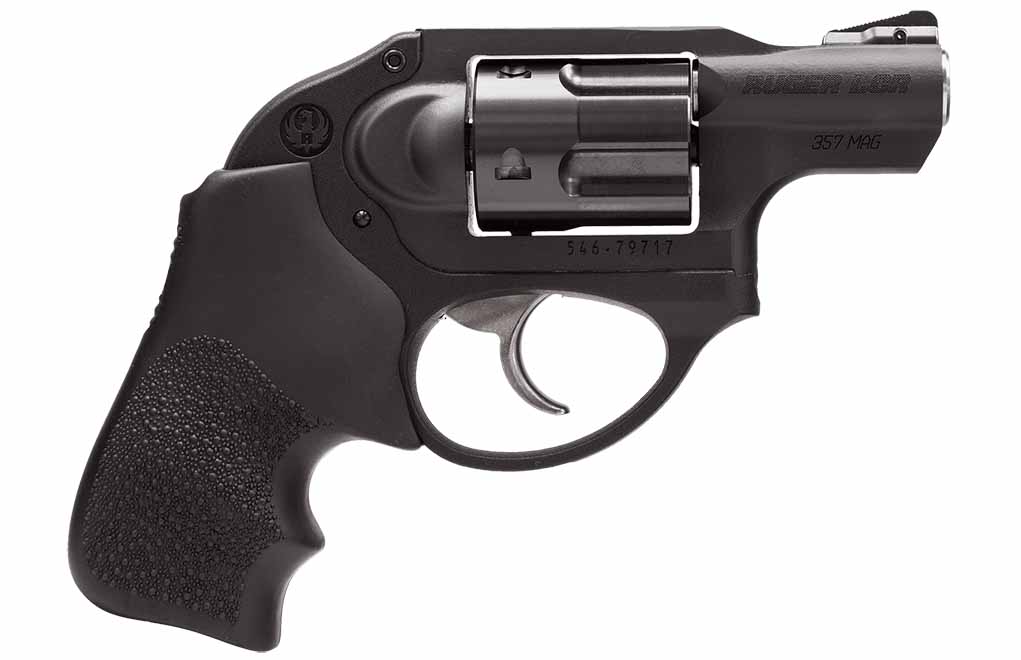
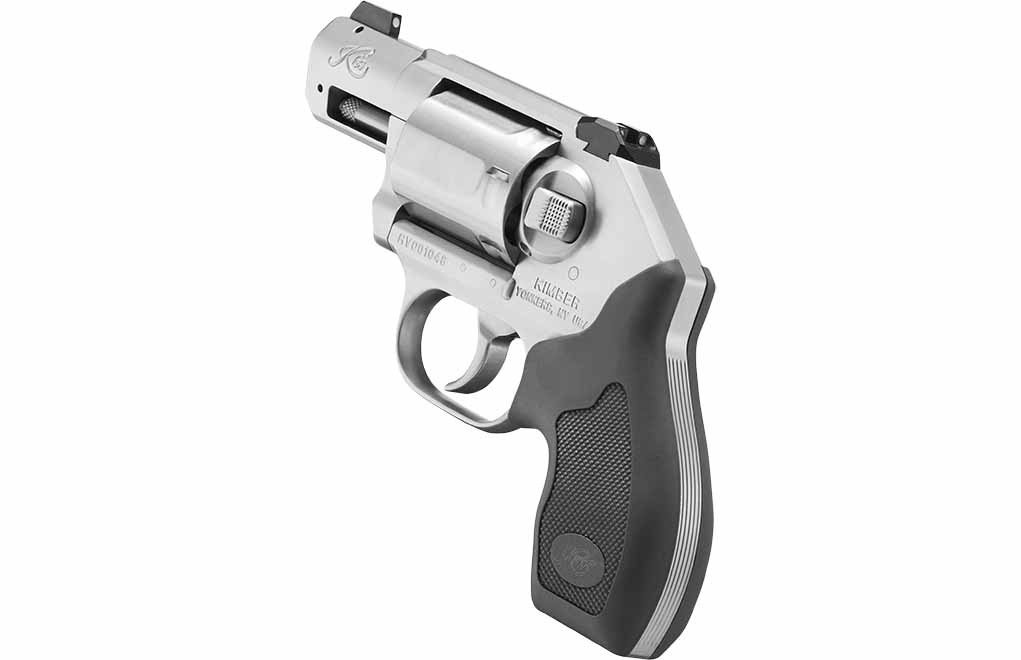
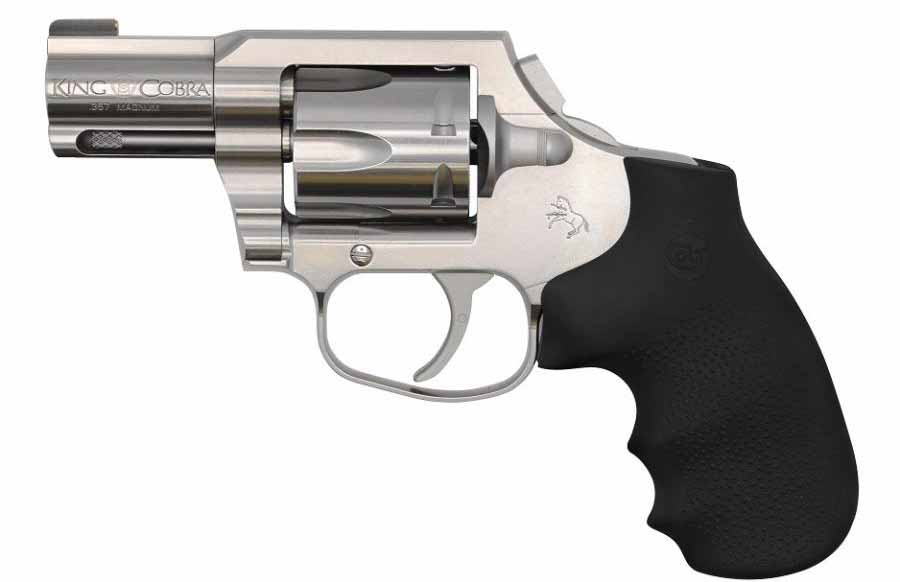
![Best Concealed Carry Guns In 2025 [Field Tested] Wilson Combat EDC X9S 1](https://gundigest.com/wp-content/uploads/Wilson-Combat-EDC-X9S-1-324x160.jpg)


![Best 9mm Carbine: Affordable PCCs [Tested] Ruger Carbine Shooting](https://gundigest.com/wp-content/uploads/Ruger-Carbine-Shooting-100x70.jpg)
![Best AR-15: Top Options Available Today [Field Tested] Harrington and Richardson PSA XM177E2 feature](https://gundigest.com/wp-content/uploads/Harrington-and-Richardson-PSA-XM177E2-feature-100x70.jpg)

I was searching about hidden firearm storage and land up on your blog. Your details are intuitive and to the point. How can I subscribe of your blog. I love to share appreciation for your efforts.